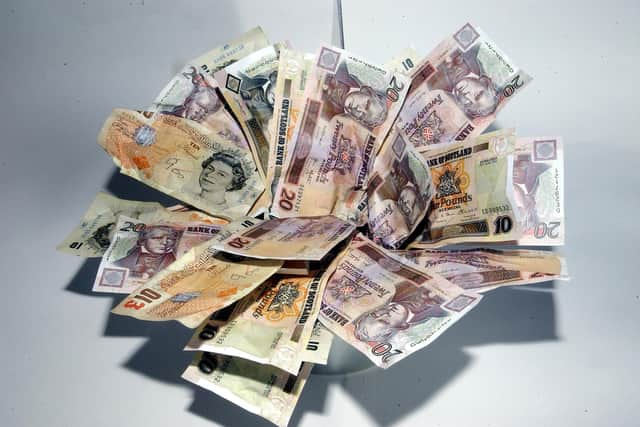Soaring inflation likely to trump supply chain crisis as biggest 2022 headache
Just as the economy was revving up thanks to the mammoth vaccine effort and lifting of the last remaining coronavirus restrictions, the supply crunch hit like a juggernaut.
Having pulled through from the so-called pingdemic that decimated workforces as staff were forced to self-isolate, firms were then faced with a summer of crippling shortages of HGV drivers.
Advertisement
Hide AdAdvertisement
Hide AdSupermarket shelves were left bare, construction projects were paused due to delayed deliveries of materials and even fast food giant McDonald's ran out of milkshakes as the haulage troubles took their toll.


Then the shortage of lorry drivers rippled down to the petrol pumps in September, causing mass panic-buying at forecourts and mile-long queues of motorists desperate to fill up their tanks.
But the UK's lorry driver shortage was just one part of a much wider supply chain problem that was felt by economies across the world as they reopened and struggled to keep up with demand.
In the UK, it sparked the twin threat of slowing growth and soaring inflation.
Having rebounded by 5.4 per cent in the second quarter after a lockdown-hit start to the year, growth pulled back sharply to 1.1 per cent between July and September as shortages hit a raft of sectors.
This was accompanied by rocketing inflation as prices jumped higher due to shortages of products and as firms were forced to pay more for haulage.
But the price pressures did not just stem from supply chain woes, with Britons left facing a mounting cost of living crisis on all fronts.
To the dismay of households and businesses, energy tariffs spiked higher due to a more than 500 per cent rise in wholesale gas prices in less than a year, while steep hikes in the cost of oil also saw fuel prices shoot up.
Advertisement
Hide AdAdvertisement
Hide AdFrom starting the year at 0.7 per cent, consumer prices index (CPI) inflation had trebled by May before surging to a decade high of 5.1 per cent in November.
But the worst is yet to come, according to the Bank of England, which has forecast inflation reaching 6 per cent in April, which will be the highest for 30 years.
Under pressure to rein in inflation, it finally delivered a rise in interest rates to 0.25 per cent from 0.1 per cent in December.
The timing raised eyebrows, given the threat of Omicron to growth, and underscored just how concerned the Bank was about rising prices.
There was a chink of light amid the gloom, however, thanks to a jobs market that has been firing on all cylinders.
Samuel Tombs, chief UK economist at Pantheon Macroeconomics, said: "The UK economy will start 2022 on a weakened footing, and will put in an underwhelming performance for the year as a whole."
Most experts expect to see growth in 2021 at close to 7 per cent, which will slow considerably to 4.2 per cent in 2022, according to Tombs.
A message from the Editor:
Thank you for reading this article. We’re more reliant on your support than ever as the shift in consumer habits brought about by coronavirus impacts our advertisers. If you haven’t already, please consider supporting our trusted, fact-checked journalism by taking out a digital subscription: www.scotsman.com/subscriptions
Comments
Want to join the conversation? Please or to comment on this article.
